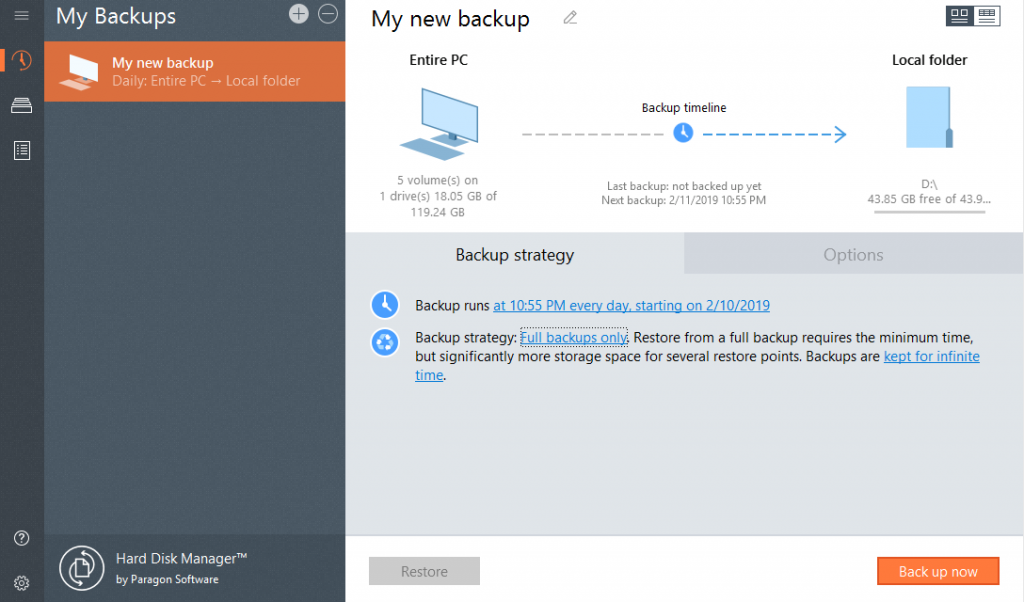A hard disk is a sealed unit containing a number of platters in a stack. Hard disks may be mounted in a horizontal or a vertical position. In this description, the hard drive is mounted horizontally.
Electromagnetic read/write heads are positioned above and below each platter. As the platters spin, the drive heads move in toward the center surface and out toward the edge. In this way, the drive heads can reach the entire surface of each platter.
Making Tracks
So basically if you find some of your hard disk partitions/drives missing in This PC (or My Computer/Windows Explorer) window, this tutorial will help you in getting them back. Actually there is a built-in program in Windows operating system called “ Disk Management ” or “ Disk Manager ” which can be used to assign or remove drive. Disk Management is a system utility in Windows that enables you to perform advanced storage tasks. Here are some of the things Disk Management is good for: To setup a new drive, see Initializing a new drive. To extend a volume into space that's not already part.
- The Global Hard Disk Market was valued USD 62269.46 million in 2020 and is expected to grow at a CAGR 5.11% during the forecast period of 2021 to 2026. Senior Press Manager press.
- Partition manager. Optimize your hard disk capacity use. It allows you to quickly adjust the hard disk into easily manageable partitions and ensure an optimized hard disk structure. To decrease the possibility of other people getting their hands on your data by erasing the data disposing of a hard disk.
- After launching and MiniTool Partition Wizard, select the system disk as the source disk and choose “Copy Disk” from the menu. Choose a hard disk as the target disk. It is important to know that all data on the target disk will be removed for a successful disk clone.
On a hard disk, data is stored in thin, concentric bands. A drive head, while in one position can read or write a circular ring, or band called a track. There can be more than a thousand tracks on a 3.5-inch hard disk. Sections within each track are called sectors. A sector is the smallest physical storage unit on a disk, and is almost always 512 bytes (0.5 kB) in size.
The figure below shows a hard disk with two platters.
Parts of a Hard Drive
The structure of older hard drives (i.e. prior to Windows 95) will refer to a cylinder/ head/ sector notation. A cylinder is formed while all drive heads are in the same position on the disk.
The tracks, stacked on top of each other form a cylinder. This scheme is slowly being eliminated with modern hard drives. All new disks use a translation factor to make their actual hardware layout appear continuous, as this is the way that operating systems from Windows 95 onward like to work.
To the operating system of a computer, tracks are logical rather than physical in structure, and are established when the disk is low-level formatted. Tracks are numbered, starting at 0 (the outermost edge of the disk), and going up to the highest numbered track, typically 1023, (close to the center). Similarly, there are 1,024 cylinders (numbered from 0 to 1023) on a hard disk.
The stack of platters rotate at a constant speed. The drive head, while positioned close to the center of the disk reads from a surface that is passing by more slowly than the surface at the outer edges of the disk.
To compensate for this physical difference, tracks near the outside of the disk are less-densely populated with data than the tracks near the center of the disk. The result of the different data density is that the same amount of data can be read over the same period of time, from any drive head position.
The disk space is filled with data according to a standard plan. One side of one platter contains space reserved for hardware track-positioning information and is not available to the operating system. Thus, a disk assembly containing two platters has three sides available for data. Track-positioning data is written to the disk during assembly at the factory. The system disk controller reads this data to place the drive heads in the correct sector position.
Sectors and Clusters
A sector, being the smallest physical storage unit on the disk, is almost always 512 bytes in size because 512 is a power of 2 (2 to the power of 9). The number 2 is used because there are two states in the most basic of computer languages — on and off.
Each disk sector is labelled using the factory track-positioning data. Sector identification data is written to the area immediately before the contents of the sector and identifies the starting address of the sector.
The optimal method of storing a file on a disk is in a contiguous series, i.e. all data in a stream stored end-to-end in a single line. As many files are larger than 512 bytes, it is up to the file system to allocate sectors to store the file's data. For example, if the file size is 800 bytes, two 512 k sectors are allocated for the file.


A cluster can consist of one or more consecutive sectors. The number of sectors is always an exponent of 2. A cluster could consist of 1 sector (2^0), or, more frequently, 8 sectors (2^3). The only odd number a of sectors a cluster could consist of is 1. It could not be 5 sectors or an even number that is not an exponent of 2. It would not be 10 sectors, but could be 8 or 16 sectors.
They are called clusters because the space is reserved for the data contents. This process protects the stored data from being over-written. Later, if data is appended to the file and its size grows to 1600 bytes, another two clusters are allocated, storing the entire file within four clusters.
If contiguous clusters are not available (clusters that are adjacent to each other on the disk), the second two clusters may be written elsewhere on the same disk or within the same cylinder or on a different cylinder — wherever the file system finds two sectors available.
A file stored in this non-contiguous manner is considered to be fragmented. Fragmentation can slow down system performance if the file system must direct the drive heads to several different addresses to find all the data in the file you want to read. The extra time for the heads to travel to a number of addresses causes a delay before the entire file is retrieved.
How To Use Windows 10 Disk Management

Cluster size can be changed to optimize file storage. A larger cluster size reduces the potential for fragmentation, but increases the likelihood that clusters will have unused space. Using clusters larger than one sector reduces fragmentation, and reduces the amount of disk space needed to store the information about the used and unused areas on the disk.
Most disks used in personal computers today rotate at a constant angular velocity. The tracks near the outside of the disk are less densely populated with data than the tracks near the center of the disk. Thus, a fixed amount of data can be read in a constant period of time, even though the speed of the disk surface is faster on the tracks located further away from the center of the disk.
Modern disks reserve one side of one platter for track positioning information, which is written to the disk at the factory during disk assembly.
Hard Disk Manager Free
It is not available to the operating system. The disk controller uses this information to fine tune the head locations when the heads move to another location on the disk. When a side contains the track position information, that side cannot be used for data. Thus, a disk assembly containing two platters has three sides that are available for data.
